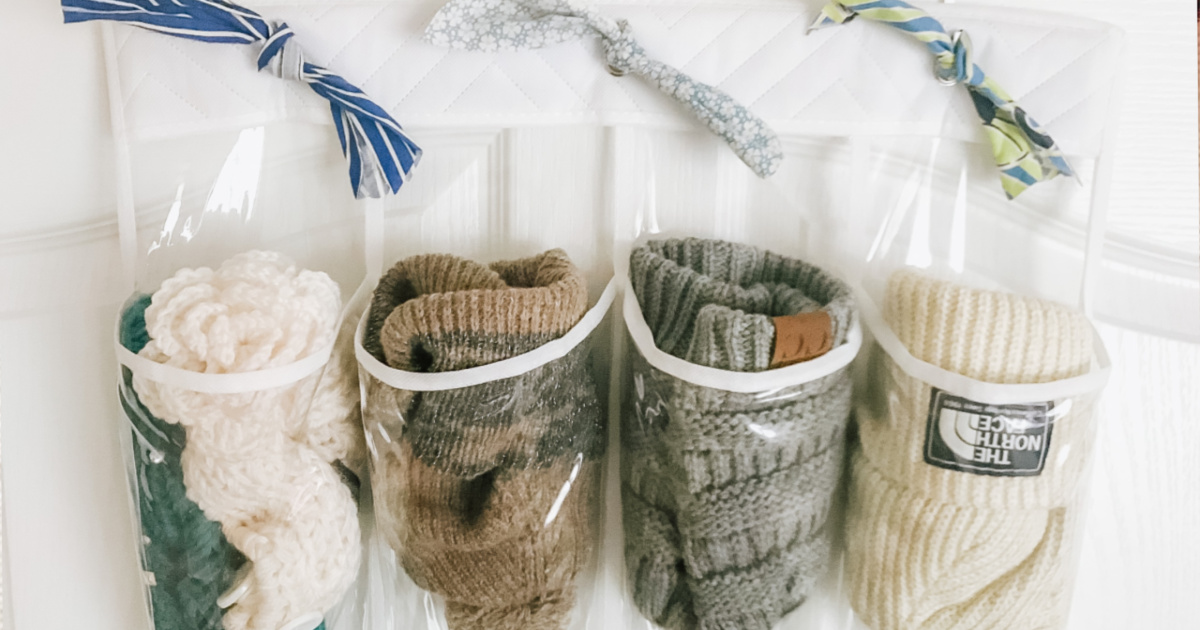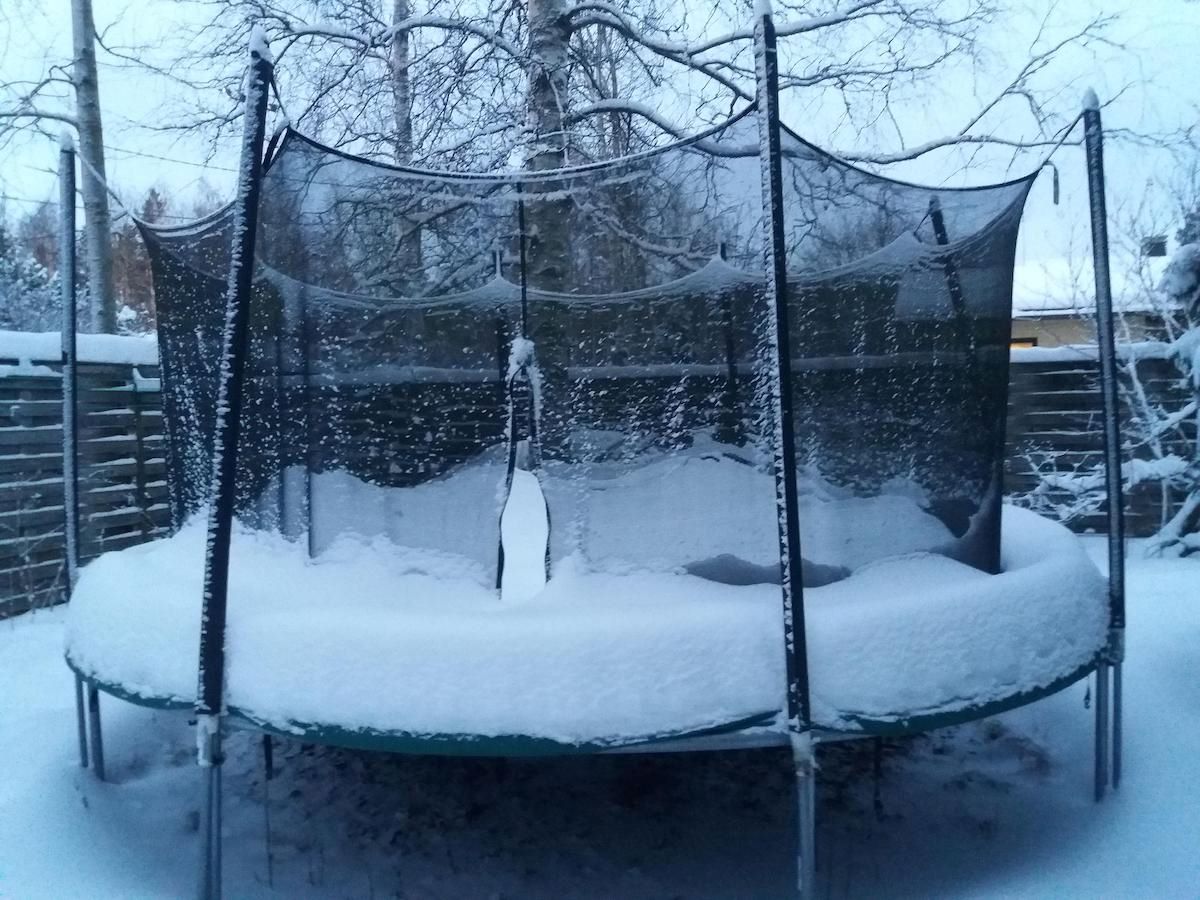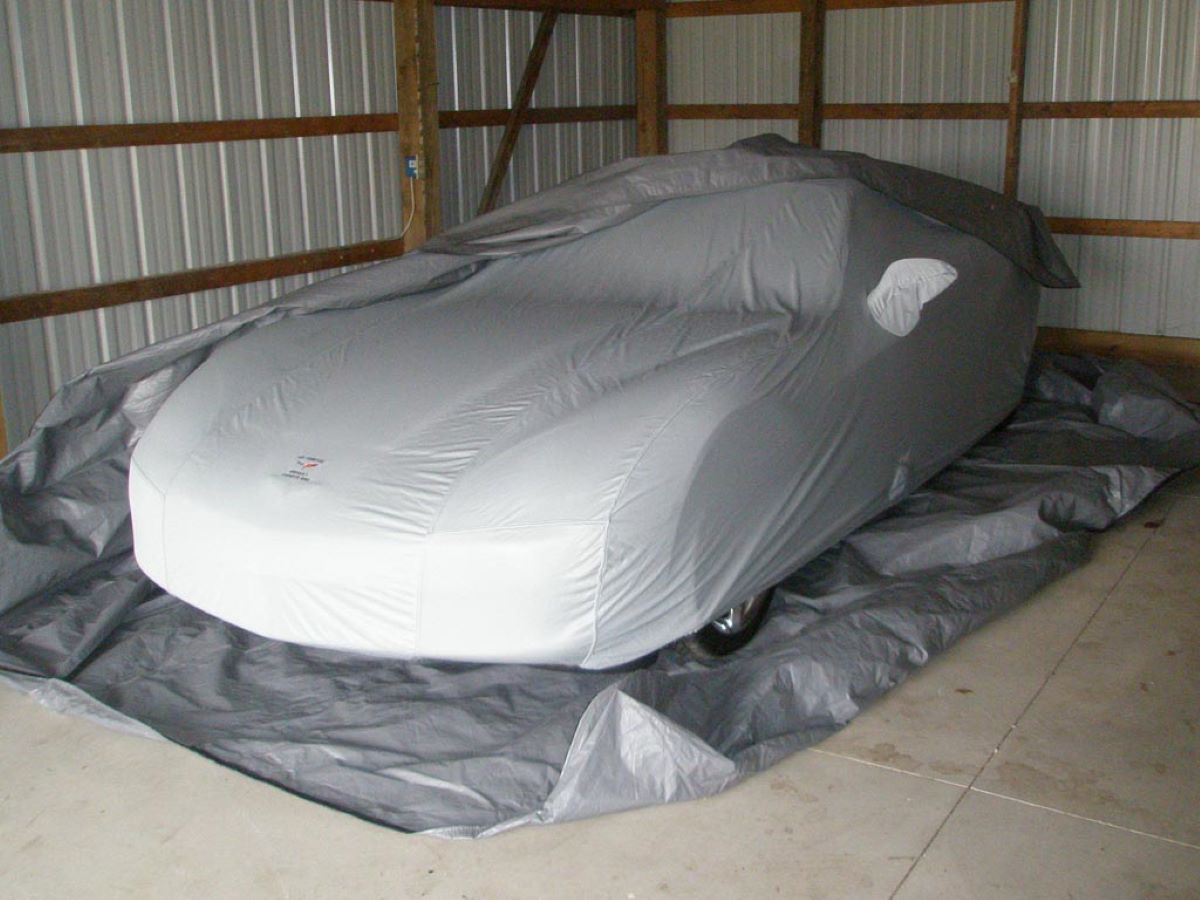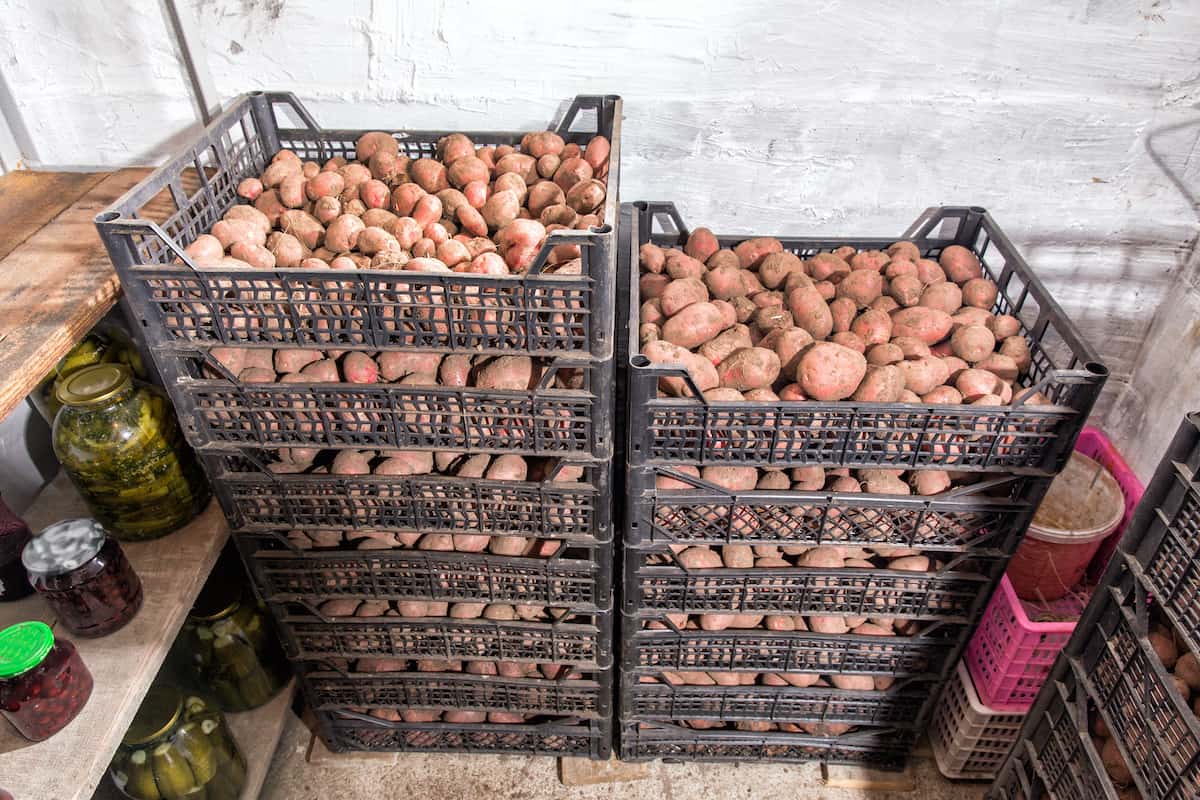

Articles
How To Store Winter Blankets
Modified: January 9, 2024
Learn how to store your winter blankets properly with these helpful articles. Keep your blankets fresh and ready for the next cold season!
(Many of the links in this article redirect to a specific reviewed product. Your purchase of these products through affiliate links helps to generate commission for Storables.com, at no extra cost. Learn more)
Introduction
As the temperatures start to rise and the days get longer, it’s time to bid farewell to winter and start preparing for the warmer seasons ahead. One of the tasks on your to-do list should be properly storing your winter blankets. Whether you have cozy fleece blankets, thick down comforters, or plush wool throws, taking the time to store them correctly will help preserve their quality and ensure they’re ready to keep you warm and snug again next winter.
In this article, we will guide you through the process of storing your winter blankets effectively, so they remain fresh and ready for use when the colder weather returns. From selecting the right storage location to protecting your blankets from moths and pests, we’ll cover all the steps necessary to keep your winter blankets in top condition.
So, let’s dive in and learn how to store winter blankets properly!
Key Takeaways:
- Properly storing winter blankets involves selecting the right location, cleaning, folding, and using suitable storage options like vacuum-sealed bags or plastic containers. Protecting against moths and pests and organizing the storage area are also crucial for maintaining blanket quality.
- When retrieving and reusing stored winter blankets, refer to your inventory list, inspect for damage, air out the blankets, and follow care instructions. By taking these steps, you can ensure that your blankets remain clean, fresh, and ready for use when the colder weather returns.
Read also: 8 Best Winter Blanket for 2024
Selecting the Right Storage Location
When it comes to storing winter blankets, choosing the right location is crucial for maintaining their quality. Here are a few key considerations to keep in mind:
- Climate Control: It’s best to store your blankets in a climate-controlled environment to protect them from extreme temperatures and humidity. Avoid areas like attics, garages, or basements that may be subject to temperature fluctuations or dampness.
- Dark and Dry: Ideally, select a storage area that is dry and dark. Exposure to direct sunlight can fade and damage the fabric of your blankets, so opt for a spot away from windows or natural light sources.
- Off the Floor: To prevent any potential moisture or pest damage, store your blankets off the floor. Utilize shelves, racks, or sturdy plastic bins to keep them elevated.
If you don’t have sufficient space inside your home, consider renting a climate-controlled storage unit that provides the necessary conditions to protect your blankets.
Now that you have a suitable storage location in mind, let’s move on to the next step: cleaning and preparing your blankets for storage.
Cleaning and Preparing the Blankets
Before storing your winter blankets, it’s important to give them a thorough cleaning to remove any dirt, stains, or odors that may have accumulated during the winter season. Follow these steps to properly clean and prepare your blankets:
- Read the Care Instructions: Start by reading the care label on your blankets. Different types of fabrics and materials may have specific cleaning instructions that you should follow to avoid damaging them.
- Machine Washable: If your blankets are machine washable, follow the instructions on the care label and wash them using a gentle cycle and mild detergent. Avoid using bleach or harsh chemicals that can deteriorate the fabric.
- Dry Cleaning: For blankets that are labeled as dry clean only, take them to a professional cleaner. They have the expertise to handle delicate fabrics and ensure thorough cleaning.
- Air Dry: Whether you machine wash or dry clean your blankets, it’s best to air dry them instead of using a dryer. Hang them over a clothesline or lay them flat on a clean surface to dry naturally. This helps prevent any shrinking or damage that can occur from high heat.
- Remove Stains and Odors: If you notice any stains or lingering odors on your blankets, treat them before storing. Use a stain remover or a mixture of mild detergent and water to gently blot the affected areas. Allow the blankets to dry completely before storing them.
Once your blankets are clean and dry, it’s time to fold them properly to optimize storage space and prevent wrinkles. Next, we’ll cover different folding techniques to ensure your winter blankets stay in great shape while in storage.
Folding Techniques for Winter Blankets
Proper folding is essential when it comes to storing your winter blankets. It not only saves space but also helps prevent wrinkles and creases. Here are a few folding techniques to consider:
- Flat Fold: Lay the blanket flat on a clean surface, ensuring it is free from any wrinkles. Fold it in half, matching the edges, and then fold it in half again. Continue folding until you have a compact rectangle.
- Rolling Method: If you have thicker blankets or limited space, rolling them can be a great option. Start by folding the blanket in half lengthwise, then tightly roll it from one end to the other. Secure the rolled blanket with a ribbon or elastic band to keep it in place.
- Pillowcase Storage: Another convenient option is to store your blankets in pillowcases. Simply fold the blanket to fit inside a pillowcase and tuck in the open end. This method keeps your blankets clean and easily accessible.
Whichever folding method you choose, make sure the folds are neat and tight to minimize the chances of wrinkles and creases forming. Once your blankets are properly folded, you can consider additional storage options to protect them further.
Using Vacuum-Sealed Bags
When it comes to maximizing storage space and protecting your winter blankets, vacuum-sealed bags can be a game-changer. These airtight bags remove excess air, reducing the size of your blankets and creating a compact storage solution. Here’s how to use vacuum-sealed bags:
- Choose the Right Size: Select vacuum-sealed bags that are suitable for the size of your blankets. It’s best to opt for larger bags that can accommodate multiple blankets or thicker ones.
- Fold and Place: Fold your blankets using one of the folding techniques mentioned earlier. Place the folded blankets inside the vacuum-sealed bag, making sure they fit comfortably.
- Seal the Bag: Once your blankets are inside the bag, locate the seal or zipper closure. Ensure it is securely closed to create an airtight seal.
- Remove Air: Most vacuum-sealed bags have a built-in valve or require the use of a vacuum cleaner to remove air. Follow the instructions provided with the bags to remove as much air as possible.
- Store the Bag: Once the air has been removed, your blankets will compress inside the bag. Find a suitable storage location and keep the sealed bag away from direct sunlight or extreme temperatures.
Using vacuum-sealed bags not only saves space but also provides an extra layer of protection against moisture, pests, and odors. However, keep in mind that the compression provided by these bags may not be suitable for delicate or sensitive fabrics. If you have blankets made of wool or other delicate materials, you may want to consider alternative storage methods.
Now that you know how to use vacuum-sealed bags, let’s explore another popular option for storing winter blankets: plastic containers or bins.
Store winter blankets in a cool, dry place to prevent mold and mildew. Avoid storing in plastic bags, as they can trap moisture. Instead, use breathable fabric storage bags or boxes.
Read more: How To Store Blankets
Storing in Plastic Containers or Bins
If vacuum-sealed bags are not the right option for your blankets or if you prefer a more accessible storage solution, using plastic containers or bins can be a practical alternative. Here’s how to store your winter blankets in plastic containers or bins:
- Select the Right Containers: Opt for sturdy, air-tight plastic containers or bins with lids. Make sure they are clean and free from any moisture or residue before using them to store your blankets.
- Arrange the Blankets: Fold your blankets using the folding techniques mentioned earlier. Place them inside the containers, ensuring they are arranged neatly and any loose ends are tucked in.
- Close and Seal: Once the blankets are placed inside the containers, securely close the lids. Check for any gaps or openings that may allow dust, moisture, or pests to enter. Use additional tape or adhesive for extra protection if necessary.
- Label the Containers: To make it easier to locate specific blankets later, label the containers with a brief description of the contents. This way, you can quickly identify which container holds the specific blankets you need without having to open and search through each one.
- Store in a Suitable Location: Find a place to store the containers that is cool, dry, and away from direct sunlight. Ideally, choose an area with minimal temperature fluctuations, such as a closet or storage room.
Storing your blankets in plastic containers or bins provides a convenient and organized way to keep them protected from dust, pests, and potential damage. Additionally, the transparent nature of the containers allows you to easily identify which blankets are stored in each one without the need to open them.
However, keep in mind that plastic containers may not offer the same level of compression as vacuum-sealed bags, so ensure you have enough storage space to accommodate the containers you plan to use.
Now that you know how to store your winter blankets in plastic containers or bins, let’s move on to the next step: protecting them from moths and other pests.
Protecting Blankets from Moths and Pests
When storing your winter blankets, it’s important to take precautions to protect them from moths and other pests that can cause damage. Here are some steps you can take to safeguard your blankets:
- Clean Before Storage: Ensure your blankets are thoroughly cleaned before storing them. Any food stains, crumbs, or other debris can attract pests, so make sure your blankets are free from any potential food sources.
- Use Moth Repellents: Mothballs or cedar sachets can help deter moths and other insects. Place these repellents in the storage containers or bags with your blankets. Just be sure they do not come into direct contact with the blankets as it may transfer an unwanted scent or residue.
- Consider Natural Repellents: If you prefer a more natural approach, try using lavender sachets or essential oils with moth-repelling properties. These can be effective in keeping pests away from your blankets.
- Check for Signs of Pests: Regularly check your stored blankets for any signs of pests, such as droppings, webbing, or holes. If you notice any infestation, take immediate action to prevent the pests from causing further damage.
- Keep the Storage Area Clean: Keep the storage area clean and free from any food debris or potential attractants for pests. Regularly vacuum or sweep the area to minimize the chances of pests finding their way to your blankets.
By taking these preventive measures, you can significantly reduce the risk of moths, pests, and other insects causing damage to your stored blankets. Protecting your blankets ensures that they will be in excellent condition and ready to use when the next winter season comes around.
Now that your blankets are stored and protected, let’s move on to the next step: labeling and organizing your storage area for easy retrieval.
Labeling and Organizing Your Storage Area
Proper organization and labeling of your storage area can save you time and effort when it’s time to retrieve your winter blankets. Here are some tips to help you keep your storage area organized:
- Use Clear Labels: Label each container or bag with a clear description of its contents. This can be as simple as “Winter Blankets” or more specific, such as “Fleece Blankets” or “Down Comforters.” Clear labels make it easy to identify the contents without having to open each container.
- Create an Inventory List: Keep a list of all the blankets you have stored, along with their corresponding containers or bags. This can be a simple handwritten list or a digital spreadsheet. This way, you can quickly locate a specific blanket without having to search through multiple containers.
- Arrange by Frequency of Use: If you have blankets that you may need to access more frequently, position them in containers that are more easily accessible. For example, place the blankets you’ll need in the early fall in a container towards the front of the storage area.
- Stack and Stabilize: When stacking containers, make sure they are stable and secure. Place heavier or larger containers at the bottom and stack lighter ones on top. Use shelves or racks, if available, to keep the containers organized and prevent them from toppling over.
- Consider Color-Coding: If you have a large collection of blankets, you may find it helpful to color-code your storage containers or bags. Assign a specific color to each type of blanket or category, making it easier to identify and retrieve the desired blankets.
By labeling and organizing your storage area, you’ll be able to easily locate and access your winter blankets when the colder weather returns. This saves you time and ensures that your blankets remain in excellent condition throughout their storage period.
Now that you know how to label and organize your storage area, let’s move on to the final step: tips for retrieving and reusing your winter blankets.
Tips for Retrieving and Reusing Winter Blankets
When the colder weather returns, it’s time to retrieve your stored winter blankets and give them a fresh start. Here are some tips to help you efficiently retrieve and reuse your blankets:
- Refer to Your Inventory List: Consult your inventory list to locate the specific container or bag that holds the blankets you need. This saves you from rummaging through multiple containers and ensures that you find the desired blankets quickly.
- Inspect for Damage: Before using your stored blankets, inspect them for any signs of damage or pests. Look for holes, stains, or any other issues that may have occurred during storage. If you notice any problems, address them accordingly before using the blankets.
- Air Out the Blankets: After being in storage for a while, your blankets may have a slightly musty or stale smell. Before using them, give them a chance to air out by hanging them outside on a clothesline or by placing them in a well-ventilated area for a few hours.
- Refresh with Fabric Freshener: If your blankets need a little boost of freshness, consider using a fabric freshener or linen spray. Lightly mist the blankets from a distance and allow them to air dry before using them.
- Follow Care Instructions: Pay attention to the care instructions on your blankets and follow them accordingly. Some blankets may require gentle washing or dry cleaning before use, while others may only need a quick fluff in the dryer on a low setting.
- Spread the Warmth: Once your blankets are fresh and ready to use, enjoy their warmth and coziness during the colder months. Whether you’re curling up on the couch with a good book or adding an extra layer to your bed, make the most of your winter blankets.
By following these tips, you can effortlessly retrieve and refresh your stored winter blankets, ensuring that they are clean, fresh, and ready for use when the colder weather arrives.
With these steps, you now have a comprehensive guide to properly storing your winter blankets. By selecting the right storage location, cleaning and preparing your blankets, utilizing appropriate folding techniques, choosing storage options like vacuum-sealed bags or plastic containers, protecting against moths and pests, and organizing your storage area, you can keep your winter blankets in excellent condition for years to come.
Now, go ahead and store your winter blankets with confidence, knowing that they will be safely preserved and ready to provide comfort and warmth when the chilly season returns!
Read more: How To Store Ferns For The Winter
Conclusion
Properly storing your winter blankets is essential for maintaining their quality and extending their lifespan. By following the steps outlined in this article, you can ensure that your blankets remain fresh, clean, and ready for use when the colder weather approaches. From selecting the right storage location to cleaning and preparing your blankets, folding them properly, and using suitable storage options like vacuum-sealed bags or plastic containers, each step plays a crucial role.
Remember to protect your blankets from moths and pests by using repellents and regularly inspecting for signs of infestation. Labeling and organizing your storage area will make it easier to locate and retrieve your blankets when needed. When the time comes to retrieve and reuse your blankets, refer to your inventory list and inspect them for any damage.
By taking the time and effort to store your winter blankets correctly, you can enjoy the warmth and comfort they provide for many winters to come. So, bid farewell to the colder season with confidence, knowing that your blankets will be in excellent condition and ready to keep you cozy when winter returns.
Now it’s time to put these storage techniques into action. Follow the steps outlined in this article and take pride in knowing that you are safeguarding your cherished winter blankets. Happy storing!
Frequently Asked Questions about How To Store Winter Blankets
Was this page helpful?
At Storables.com, we guarantee accurate and reliable information. Our content, validated by Expert Board Contributors, is crafted following stringent Editorial Policies. We're committed to providing you with well-researched, expert-backed insights for all your informational needs.














0 thoughts on “How To Store Winter Blankets”